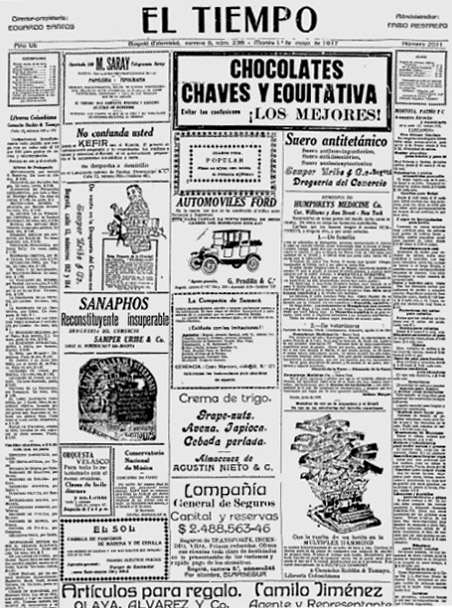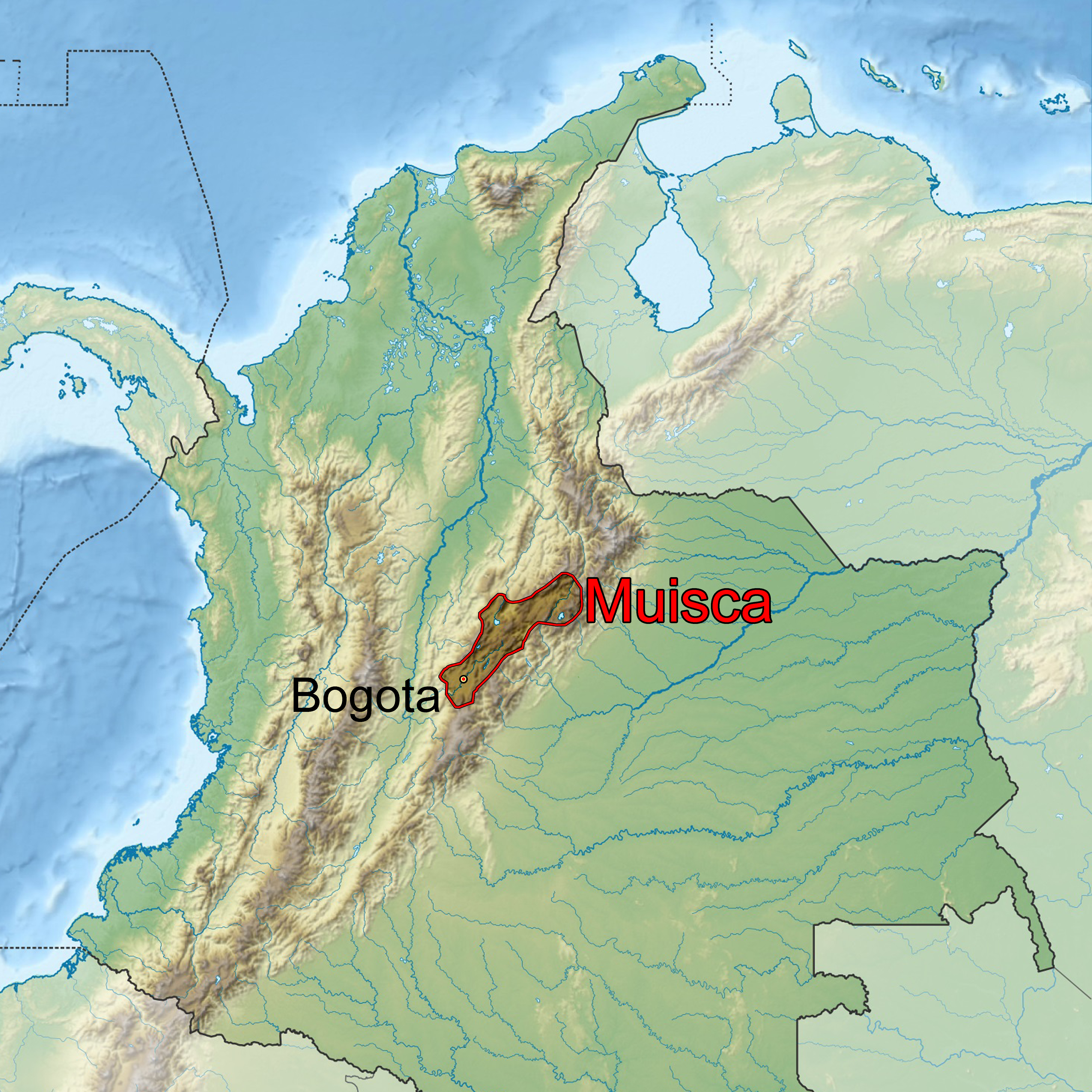|
Gyalideopsis Chicaque
''Gyalideopsis chicaque'' is a species of lichen in the family Gomphillaceae. Found at an altitude of in the Eastern Ranges of the Andes in Colombia, it was described as new to science by Bibiana Moncada and Robert Lücking in 2011. Habitat and etymology The lichen is only known from a single but well-developed collection found in a montane rainforest over compacted soil in Chicaque Natural Park, Altiplano Cundiboyacense in San Antonio del Tequendama, Cundinamarca, and the species epithet refers to the type locality. The park is located at 30 minutes from the Colombian capital Bogotá. Chicaque comes from Muysccubun, the language of the indigenous Muisca who inhabited the area before the Spanish conquest and means "our struggle". Description ''Gyalideopsis chicaque'' is characterized by its small, broadly sessile, dark-brown apothecia lacking pruina and very small, submuriform ascospores. There are no similar species growing on rock or soil. See also * List of flora and f ... [...More Info...] [...Related Items...] OR: [Wikipedia] [Google] [Baidu] |
Robert Lücking
Robert Lücking (born 1964) is a German lichenologist, known for his extensive research on foliicolous lichens (lichens that live on leaves) and his significant contributions to the taxonomy, ecology, and biodiversity of fungi and lichens. He earned his master's and PhD from the University of Ulm, focusing on foliicolous lichens. He has received numerous awards for his work, including the Mason E. Hale Award for his doctoral thesis, the Augustin Pyramus de Candolle prize for his monograph, and the Tuckerman Award twice for his publications in the scientific journal '' The Bryologist''. Since 2015, Lücking has been serving as the curator of lichens, fungi, and bryophytes at the Berlin Botanical Garden and Botanical Museum, overseeing a vast scientific collection and contributing to major advancements in molecular phylogenetics in lichenology. Lücking has authored or co-authored the description of more than 1000 taxa, making him one of the most prolific modern lichenologists. ... [...More Info...] [...Related Items...] OR: [Wikipedia] [Google] [Baidu] |
Bogotá
Bogotá (, also , , ), officially Bogotá, Distrito Capital, abbreviated Bogotá, D.C., and formerly known as Santa Fe de Bogotá (; ) during the Spanish Imperial period and between 1991 and 2000, is the capital city, capital and largest city of Colombia, and one of the List of largest cities, largest cities in the world. The city is administered as the Capital District, as well as the capital of, though not politically part of, the surrounding department of Cundinamarca Department, Cundinamarca. Bogotá is a territorial entity of the first order, with the same administrative status as the departments of Colombia. It is the main political, economic, administrative, industrial, cultural, aeronautical, technological, scientific, medical and educational center of the country and northern South America. Bogotá was founded as the capital of the New Kingdom of Granada on 6 August 1538 by Spanish conquistador Gonzalo Jiménez de Quesada after a harsh Spanish conquest of the Muisca, e ... [...More Info...] [...Related Items...] OR: [Wikipedia] [Google] [Baidu] |
Lichens Described In 2011
A lichen ( , ) is a hybrid colony (biology), colony of algae or cyanobacteria living symbiotically among hypha, filaments of multiple fungus species, along with yeasts and bacteria embedded in the cortex or "skin", in a mutualism (biology), mutualistic relationship.Introduction to Lichens – An Alliance between Kingdoms . University of California Museum of Paleontology. . Lichens are the lifeform that first brought the term symbiosis (as ''Symbiotismus'') into biological context. Lichens have since been recognized as important actors in nutrient cycling and producers which many higher trophic feeders feed on, such as reindeer, gastropods, nematodes, mites, and springtails. Lichens have properties different from those of their component organisms. They come in man ... [...More Info...] [...Related Items...] OR: [Wikipedia] [Google] [Baidu] |
Lichens Of Colombia
A lichen ( , ) is a hybrid colony of algae or cyanobacteria living symbiotically among filaments of multiple fungus species, along with yeasts and bacteria embedded in the cortex or "skin", in a mutualistic relationship.Introduction to Lichens – An Alliance between Kingdoms . University of California Museum of Paleontology. . Lichens are the lifeform that first brought the term symbiosis (as ''Symbiotismus'') into biological context. Lichens have since been recognized as important actors in and producers which many higher trophic feeders feed on, such as reindeer, gastropods, nematodes, mites, and springtails. Lich ... [...More Info...] [...Related Items...] OR: [Wikipedia] [Google] [Baidu] |
Lichen Species
A lichen ( , ) is a hybrid colony (biology), colony of algae or cyanobacteria living symbiotically among hypha, filaments of multiple fungus species, along with yeasts and bacteria embedded in the cortex or "skin", in a mutualism (biology), mutualistic relationship.Introduction to Lichens – An Alliance between Kingdoms . University of California Museum of Paleontology. . Lichens are the lifeform that first brought the term symbiosis (as ''Symbiotismus'') into biological context. Lichens have since been recognized as important actors in nutrient cycling and producers which many higher trophic feeders feed on, such as reindeer, gastropods, nematodes, mites, and springtails. Lichens have properties different from those of their component organisms. They come in man ... [...More Info...] [...Related Items...] OR: [Wikipedia] [Google] [Baidu] |
El Tiempo (Colombia)
''El Tiempo'' () is a nationally distributed broadsheet daily newspaper in Colombia launched on January 30, 1911. , ''El Tiempo'' had the highest circulation in Colombia with an average daily weekday of 1,137,483 readers, rising to 1,921,571 readers for the Sunday edition. From 1913 to 2007, ''El Tiempos main shareholders were members of the Santos family. Several also participated in Colombian politics: Eduardo Santos Montejo was President of Colombia from 1938 to 1942. Francisco Santos Calderón served as Vice-President (2002–2010). And Juan Manuel Santos as Defense Minister (2006–2009) during Álvaro Uribe's administration; Juan Manuel was elected president of Colombia in 2010 and served in that position until 2018. In 2007, Spanish Grupo Planeta acquired 55% of the ''Casa Editorial El Tiempo'' media group, including the newspaper and its associated TV channel Citytv Bogotá. In 2012, businessman Luis Carlos Sarmiento Angulo bought the shares of Planeta, the Santo ... [...More Info...] [...Related Items...] OR: [Wikipedia] [Google] [Baidu] |
List Of Flora And Fauna Named After The Muisca
The Muisca Confederation, Muisca were a people living in the central highlands of Colombia; the Altiplano Cundiboyacense and neighbouring valleys. The variation of climates and ecozones within their territories made the Muisca excellent Muisca agriculture, farmers. Over time, various species of flora and fauna have been discovered in Colombia. This list contains the living genera and species and fossils named after the Muisca, their Muisca religion, religion or their settlements. Three other Muisca etymologies are recognised; Thomagata Patera, named after Muisca mythology, mythological ''cacique'' Thomagata, and Bochica Patera are volcanoes on Io (moon), Io and BD Bacatá is the highest skyscraper of Colombia. List of flora and fauna named after the Muisca See also * List of Muisca toponyms * Muisca people, Muisca * Biodiversity of Colombia, Chibcha language, Bogotá savanna, Altiplano Cundiboyacense References {{Muisca navbox, Geography and history, st ... [...More Info...] [...Related Items...] OR: [Wikipedia] [Google] [Baidu] |
Ascospore
In fungi, an ascospore is the sexual spore formed inside an ascus—the sac-like cell that defines the division Ascomycota, the largest and most diverse Division (botany), division of fungi. After two parental cell nucleus, nuclei fuse, the ascus undergoes meiosis (halving of genetic material) followed by a mitosis (cell division), ordinarily producing eight genetically distinct haploid spores; most yeasts stop at four ascospores, whereas some moulds carry out extra post-meiotic divisions to yield dozens. Many asci build turgor, internal pressure and shoot their spores clear of the calm boundary layer, thin layer of still air enveloping the fruit body, whereas subterranean truffles depend on animals for biological dispersal, dispersal. Ontogeny, Development shapes both form and endurance of ascospores. A hook-shaped crozier aligns the paired nuclei; a double-biological membrane, membrane system then parcels each daughter nucleus, and successive wall layers of β-glucan, chitosan ... [...More Info...] [...Related Items...] OR: [Wikipedia] [Google] [Baidu] |
Pruina
Pruinescence , or pruinosity, is a "frosted" or dusty-looking coating on top of a surface. It may also be called a pruina (plural: ''pruinae''), from the Latin word for hoarfrost. The adjectival form is pruinose . Entomology In insects, a "bloom" caused by wax particles on top of an insect's cuticle covers up the underlying coloration, giving a dusty or frosted appearance. The pruinescence is commonly white to pale blue in color but can be gray, pink, purple, or red; these colors may be produced by Tyndall effect, Tyndall scattering of light. When pale in color, pruinescence often strongly reflects ultraviolet. Pruinescence is found in many species of Odonata, particularly damselfly, damselflies of the families Lestidae and Coenagrionidae, where it occurs on the wings and body. Among true dragonfly, dragonflies it is most common on male Libellulidae (skimmers). In the common whitetail and blue dasher dragonflies (''Plathemis lydia'' and ''Pachydiplax longipennis''), males display ... [...More Info...] [...Related Items...] OR: [Wikipedia] [Google] [Baidu] |
Apothecia
An ascocarp, or ascoma (: ascomata), is the fruiting body ( sporocarp) of an ascomycete phylum fungus. It consists of very tightly interwoven hyphae and millions of embedded asci, each of which typically contains four to eight ascospores. Ascocarps are most commonly bowl-shaped (apothecia) but may take on a spherical or flask-like form that has a pore opening to release spores (perithecia) or no opening (cleistothecia). Classification The ascocarp is classified according to its placement (in ways not fundamental to the basic taxonomy). It is called ''epigeous'' if it grows above ground, as with the morels, while underground ascocarps, such as truffles, are termed ''hypogeous''. The structure enclosing the hymenium is divided into the types described below (apothecium, cleistothecium, etc.) and this character ''is'' important for the taxonomic classification of the fungus. Apothecia can be relatively large and fleshy, whereas the others are microscopic—about the s ... [...More Info...] [...Related Items...] OR: [Wikipedia] [Google] [Baidu] |
Spanish Conquest Of The Muisca
The Spanish conquest of the Muisca took place from 1537 to 1540. The Muisca people, Muisca were the inhabitants of the central Andes, Andean highlands of Colombia before the arrival of the Spanish conquistadors. They were organised in a loose Muisca Confederation, confederation of different Muisca rulers, rulers; the ''zipa, psihipqua'' of Bacatá, Muyquytá, with his headquarters in Funza, the ''zaque, hoa'' of Tunja, Hunza, the ''iraca'' of the sacred City of the Sun Sogamoso, Sugamuxi, the Tundama of Duitama, Tundama, and several other independent ''caciques''. The most important rulers at the time of the conquest were ''psihipqua'' Tisquesusa, ''hoa'' Quemuenchatocha, Eucaneme, ''iraca'' Sugamuxi and Tundama in the northernmost portion of their territories. The Muisca were organised in small communities of circular enclosures (''ca'' in their language Chibcha language, Muysccubbun; literally "language of the people"), with a central square where the ''Muisca architecture, boh ... [...More Info...] [...Related Items...] OR: [Wikipedia] [Google] [Baidu] |
Muisca
The Muisca (also called the Chibcha) are indigenous peoples in Colombia and were a Pre-Columbian culture of the Altiplano Cundiboyacense that formed the Muisca Confederation before the Spanish colonization of the Americas. The Muisca speak Muysccubun, a language of the Chibchan language family, also called ''Muysca'' and ''Mosca''. The first known contact with Europeans in the region was in 1537 during the Spanish conquest of New Granada. In New Spain, Spanish clerics and civil officials had a major impact on the Muisca, attempting to Christianize and incorporate them into the Spanish Empire as subjects. Postconquest Muisca culture underwent significant changes due to the establishment of the New Kingdom of Granada. Sources for the Muisca are far less abundant than for the Aztec Empire of Mesoamerica or the Inca Empire and their incorporation to the Spanish Empire during the colonial era. In the New Kingdom of Granada and into the colonial era, the Muisca became "th ... [...More Info...] [...Related Items...] OR: [Wikipedia] [Google] [Baidu] |








